I'm not a psychologist. I'm just a mom who had to watch her 11-year-old go from an active kid to a total tablet zombie.
November 5, 2025 at 9:17 AM EDT
Lisa Martinez, Mother, Brooklyn
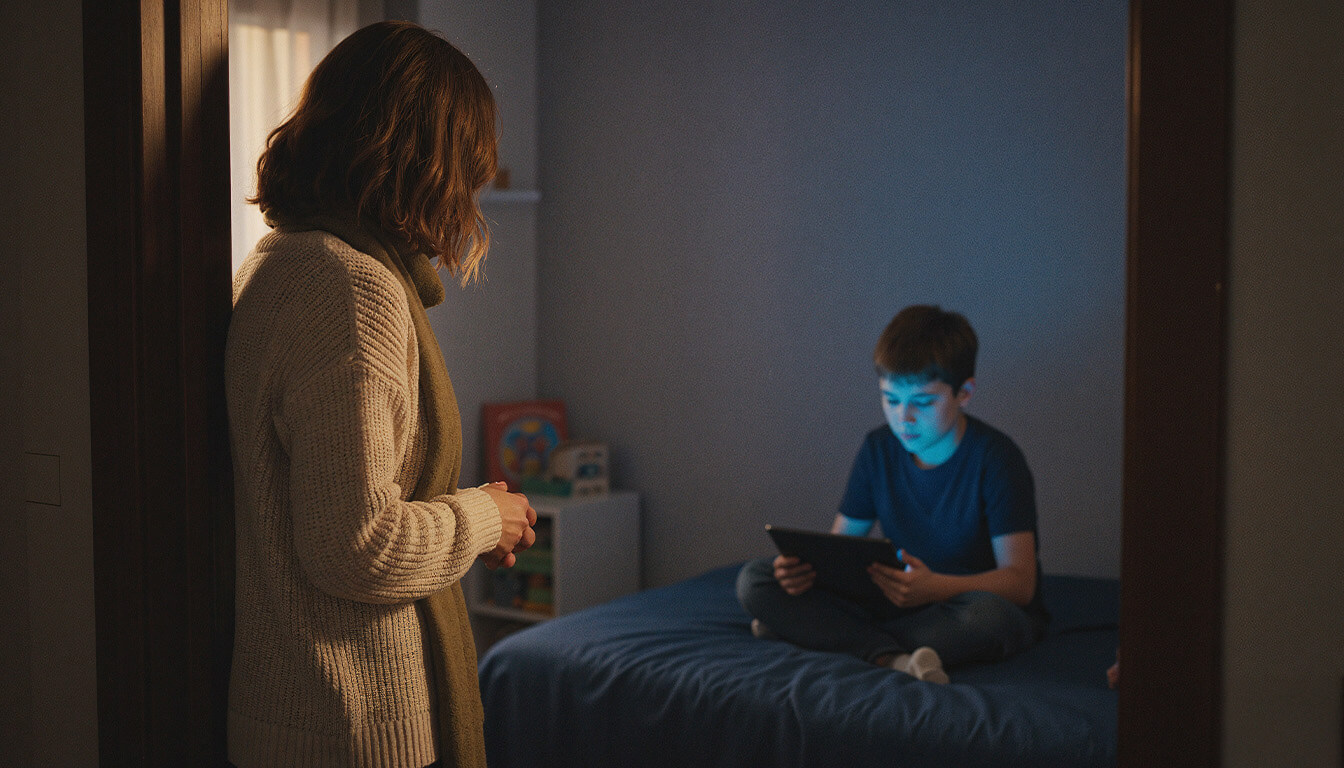
How tablets and screens steal hours every day (and childhood goes first)
I'll never forget the moment I realized I'd lost my son.
It wasn't dramatic.
No accident. No illness.
Just a Tuesday night when I walked into Ryan's room to say goodnight
and he didn't even look up.
His eyes: Glued to the tablet.
His face: Lit up by that cold, blue light.
"Ryan?" I said.
Nothing.
"RYAN!"
He jumped like I'd yanked him out of a dream.
"What, Mom?"
Annoyed. Irritated. Like I was the problem.
And that's when it hit me:
When was the last time I'd seen my son... smile?
Not that "leave me alone" smile.
A real smile.
The smile he always had when he played basketball.
I couldn't remember.
What I found out later made everything worse:
Every hour your kid spends staring at a screen literally kills the neural connections they need for a healthy future.
The CDC published a 2024 study that kept me up for three nights:
50.4% of American teenagers spend more than 4 hours daily on screens with direct impacts on the brain areas responsible for memory, impulse control, and emotional regulation.
Ryan was 11.
He was spending 4-5 hours daily on the tablet.
And I had no idea what it was doing to him.
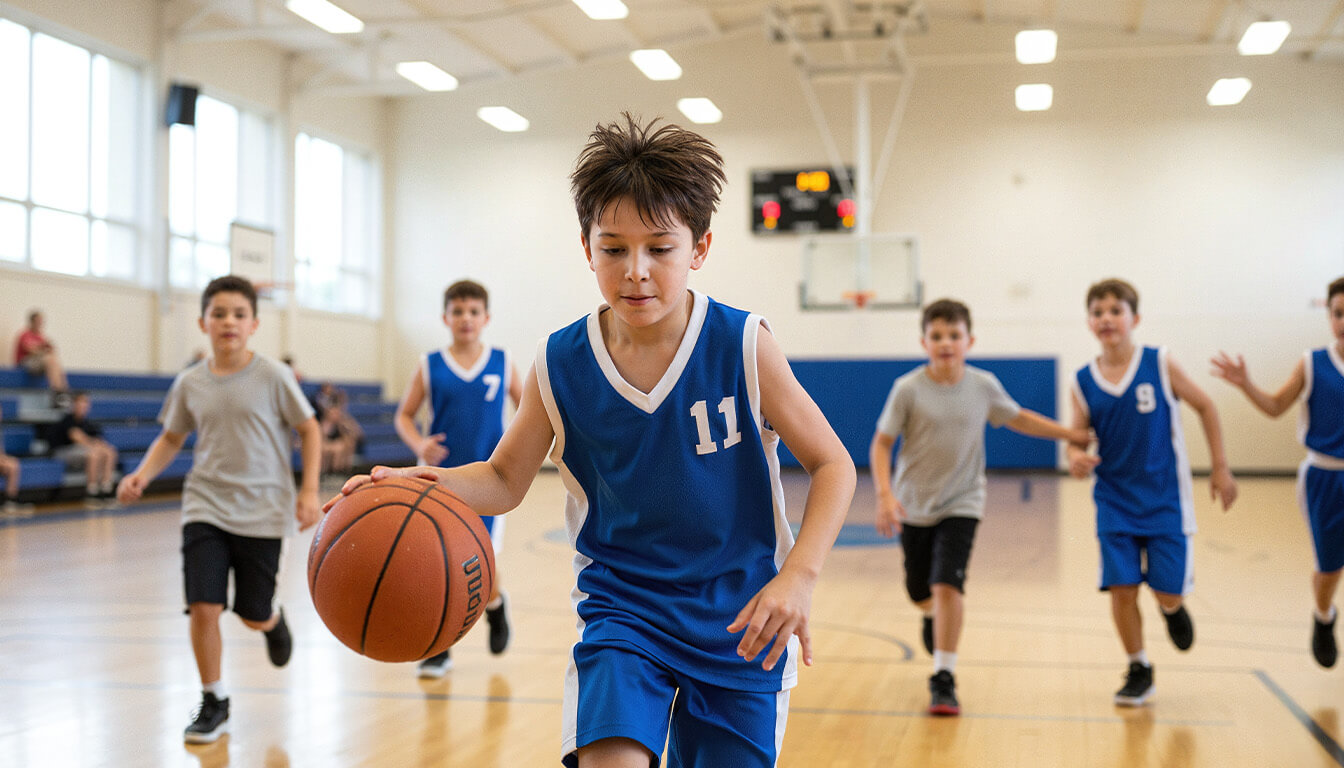
How I lost my son
Let me tell you about Ryan from a few months ago.
He was point guard on his middle school's starting team.
First one at practice. Last to leave.
After school? Outside with friends. Basketball. Always basketball.
"Mom, I love basketball," he told me once. "When I grow up, I'm playing in the NBA. You'll see."
I believed him.
Then came the tablet.
And suddenly everything was different.
He'd come home from school and go straight to his room.
Door closed.
Tablet on.
I'd call him for dinner. No answer.
"Did you practice today?"
"No."
"Why not?"
"Don't feel like it."
My son, who LOVED BASKETBALL, "didn't feel like it."
Shortly after, his coach called.
"Mrs. Martinez, I'm worried about Ryan. He doesn't come to practice anymore. And when he does... he's not there."
I knew what he meant.
His body was there.
But his mind?
Trapped somewhere in YouTube videos and mobile games.
A few weeks later, the coach took him off the starting team.
Ryan cried all night.
The next morning he said: "I hate basketball anyway."
Two weeks later, his teacher called.
"Ryan's grades are falling. Math: from B to D. English: from A to C. He's not doing homework anymore."
"Has anything changed at home?"
Yes.
My son was gone.
And I had no idea how to get him back.

$706 and four failed solutions later
I'm not a psychologist.
But I'm a desperate mom.
So I did what every desperate mom does:
I googled. I researched. I tried EVERYTHING.
Solution #1: Screen Time Limit Apps $49/year
The tablet locked after 2 hours.
But Ryan?
He just sat there staring at the lock screen.
Or he found ways to bypass the app.
$49 wasted.
Solution #2: "Just send him outside to play"
Works great.
Except when it's raining. Or dark at 5 PM. Or winter.
"Mom, no one's outside. Everyone's on their tablet."
Solution #3: Tutoring $180 per month
His grades improved.
His screen time? No difference.
Solution #4: Family Therapy $159 per session
Three sessions long.
The therapist: "Ryan should do more physical activities."
Ryan rolled his eyes.
I did too.
$477 wasted.
TOTAL: $706
RESULT: Zero.
Ryan was still spending 4-5 hours daily on screens.
And me? I felt like the worst mom in the world.

The 2 AM discovery that changed everything
One night, 2:14 AM.
I couldn't sleep.
Guilt, worry, fear everything was spinning in my head.
I got up to get water.
Ryan's bedroom door: Slightly open.
Light.
I opened the door quietly.
There he was.
2 in the morning.
Tablet in hand.
Headphones on.
Eyes red from the blue light.
"RYAN!"
He practically jumped out of bed.
"Mom, I I couldn't sleep"
"How long have you been awake?"
"I... I don't know... maybe since 11?"
Three hours.
My 11-year-old son had been awake for three hours.
On the tablet.
I took the tablet away.
He cried.
I cried too.
The next day, I sat down and started seriously researching.
Not Google "how to limit screen time" articles.
Real research.
Scientific studies.
CDC data.
Developmental psychology.
I spent three weeks reading everything I could find.
And what I found... changed me forever.
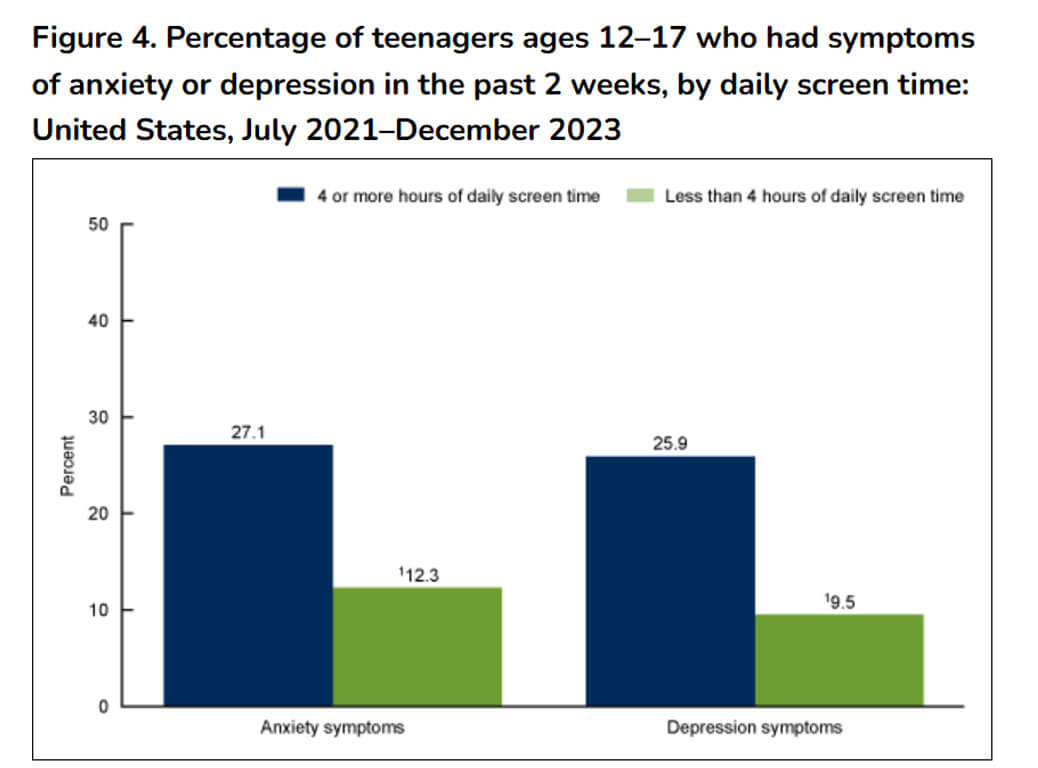
The truth nobody told me
It wasn't Ryan's fault. It was mine.
Problem #1: Kids NEED movement
I always thought: "Screen time is the problem."
Wrong.
Screen time is the SYMPTOM.
The problem? Lack of movement.
A 2025 study published in BMC Public Health showed:
Movement reduces depression, anxiety, and stress in children.
Improves self-esteem and social skills.
But here's the crazy part:
According to the 2024 US Report Card on Physical Activity for Children and Youth:
Only 20-28% of American kids get 60 minutes of daily movement.
Not because they're lazy.
But because they lack options.
Problem #2: Social media makes billions from this
In 2022 alone, they made $11 billion from kids under 18 in the US.
The longer our kids sit in front of screens, the more money they make.
This isn't an accident.
This is business.
These apps are designed with algorithms to keep kids glued to screens.
Not because they're evil.
But because it's their business model.
And who pays the price?
Our kids.
With their time, movement, and childhood.
Problem #3: Playing outside doesn't work anymore
A study shocked me:
American kids spend 35% less time outdoors than their parents' generation.
Only 10% play outside regularly.
Why? 31% of parents say: "Weather."
But the real reason?
Ryan said it himself: "Mom, no one's outside. Everyone's inside."
Okay. I get it.
So... play inside?
Problem #4: Playing inside is too loud
This was the moment everything clicked.
Ryan WANTED to practice.
But every time he dribbled inside:
Neighbors complained.
Landlord threatened.
I banned it.
So... tablet.
What else was he supposed to do?
When it's cold outside.
When he actually had energy.
I'd taken away his passion.
Without giving him an alternative.
Because of... noise.
What I understood in that moment:
Ryan didn't need more limits.
He needed a real alternative.
One that's just as fun as the tablet.
That works indoors.
That makes no noise.
That actually allows MOVEMENT.
Is that really too much to ask?
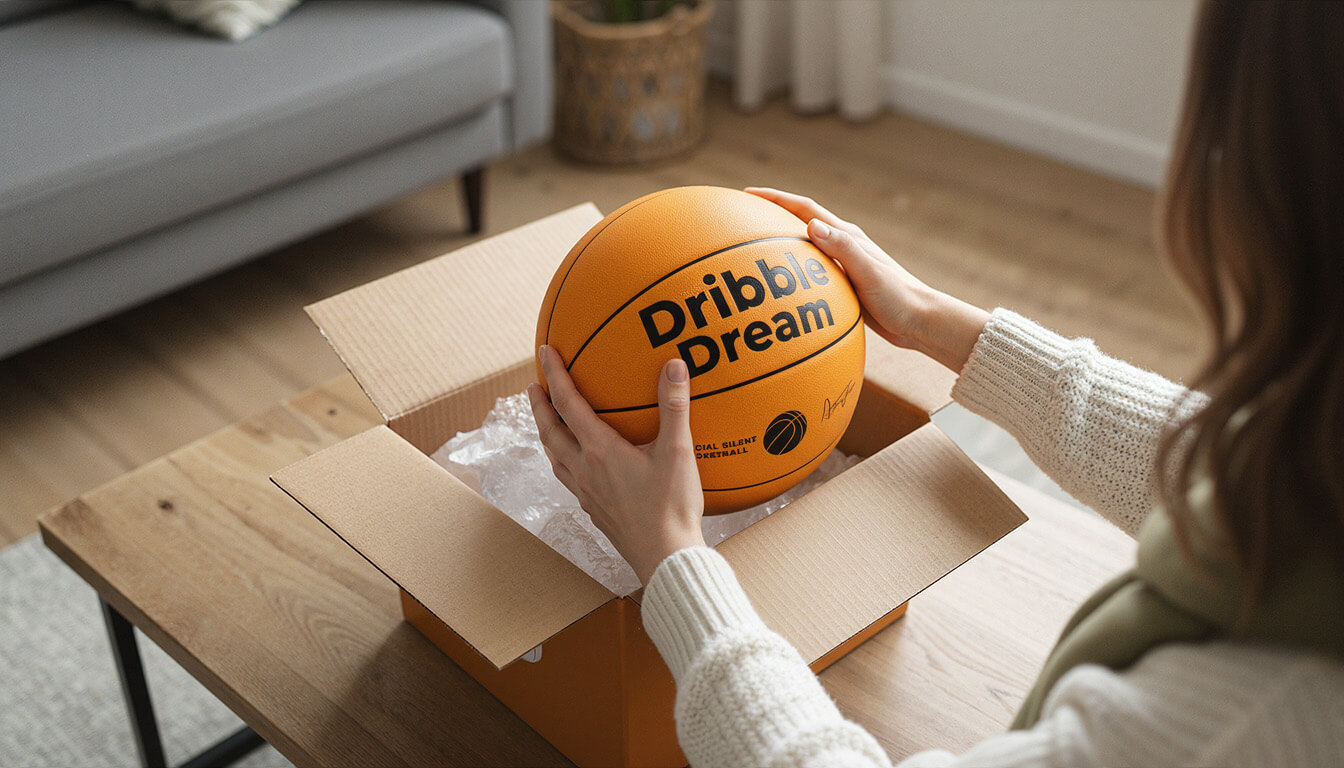
The solution that sounded too simple to be true
I spent more days looking for a solution.
Then on page 4 of Google, I found a forum post.
The post:
How my son stopped playing Fortnite (by accident)
"So, I bought my son this weird foam basketball for his birthday.
Silent basketball or something.
Thought it was a gimmick.
But he's been using it nonstop for 3 weeks now.
Plays in the living room. No noise. Neighbors don't care.
And here's the crazy part: He hasn't touched his Playstation in 2 weeks.
I didn't ban anything. Didn't force anything.
He just... stopped."
43 comments.
I read every single one.
"This worked for us too."
"My son now plays before school. Voluntarily."
"Best $40 I ever spent."
I thought: "This sounds like BS."
But I was desperate.
I'd already wasted $706.
What was another $40?
Two days later, a package arrived.
Dribble Dream Silent Basketball.
"Hey, I got you something," I said casually.
I tossed him the ball.
"A basketball. But silent. Try it."
He rolled his eyes.
"Mom, that's dumb."
But he dribbled it.
Once. Twice. Pause.
"Wait... this makes no noise."
"Exactly."
I saw something in his eyes I hadn't seen in months:
Curiosity.
For the next 45 minutes, I heard:
Nothing.
Absolutely nothing.
No noise.
No neighbor complaints.
Just my son finally doing what he loved again.
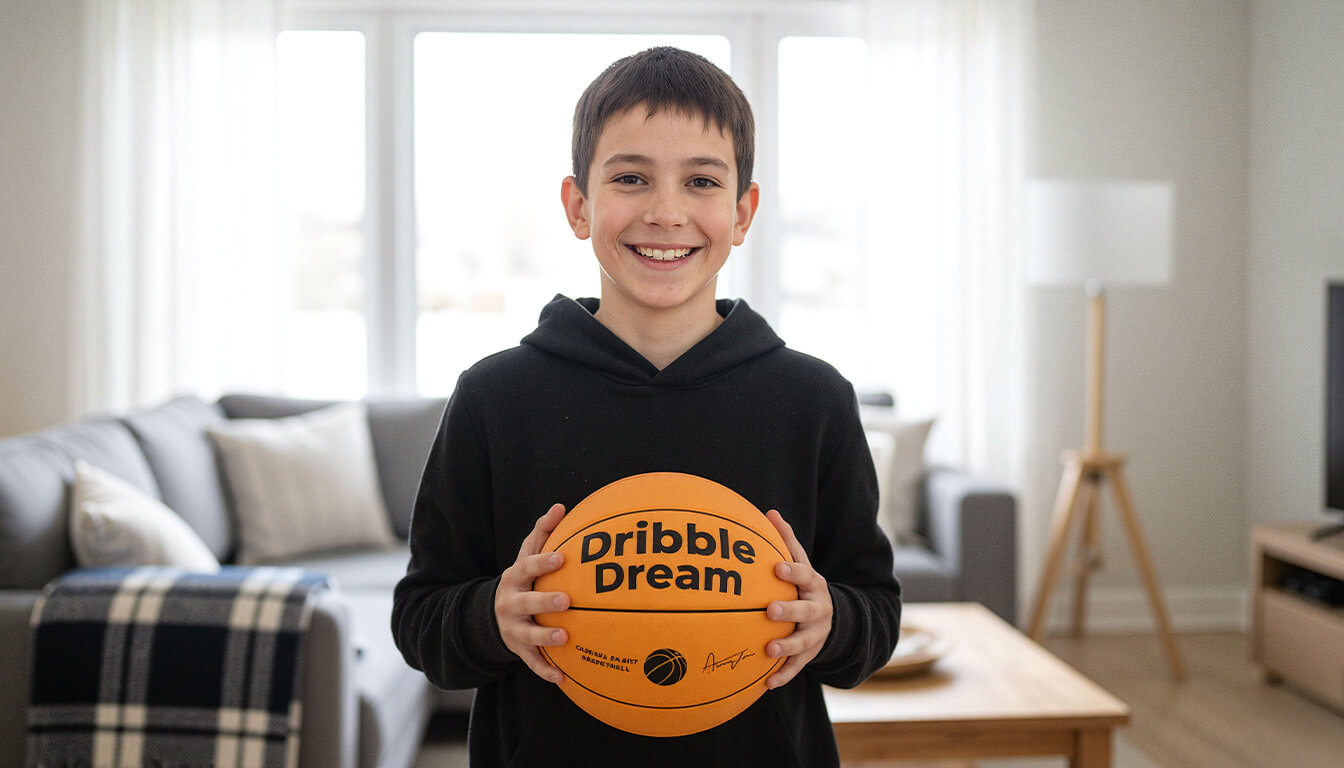
The solution that sounded too simple to be true
I'd love to say Ryan changed immediately.
But that would be a lie.
See for yourself.
Week 1:
Ryan played 45 minutes in the living room.
Then he went to his room.
Tablet on.
I was disappointed.
But then I realized:
For 45 minutes, he had MOVED.
That was more than the last 3 months.
Week 2:
"Mom, can I take the ball to school?"
"Why?"
"I want to show my friends."
First time in months he talked about friends.
WEEK 3:
His teacher, Mr. Johnson, called.
"Mrs. Martinez, I just wanted to say Ryan has been completely different this week."
"More focused in class. Participating more. Smiling again."
"Has anything changed at home?"
"Just... a basketball," I said.
"Whatever it is keep it up."
WEEK 4:
Ryan's coach called.
"Mrs. Martinez, Ryan came to practice last week."
"And his handles? Better than months ago."
"What did you do?"
"I let him practice," I said.
Screen time per day: 30 minutes.
From 5 hours to 30 minutes.
No forcing. No limits. No fights.
Just by removing the barrier.

The solution that sounded too simple to be true
I was so excited that I posted it in a Mom Facebook Group.
Within minutes, the comments piled up:
"Does this really work?"
"Is this fake?"
"Where can I buy it?"
I told them all the truth:
"I'm not an expert. I'm just a mom who was desperate."
"But yeah. It worked for us."
34 of them bought the ball.
I asked them to send me updates.
What happened over the next 30 days exceeded everything I could have imagined:
Of the 34 moms:
- 27 reported significantly less screen time with their kids
- 29 said their kids were more active and happier
- 31 said: "This changed our family"
Jennifer from Phoenix: "My son now practices BEFORE school. Voluntarily. I'm speechless."
Michelle from Dallas: "First week without screen time battles in 18 months."
Sarah: "Why didn't anyone tell us about this before?"
Good question, Sarah.
Why didn't anyone tell us?

What "normal" childhood actually means today
Normal childhood doesn't mean being perfect.
It means:
- Movement. Daily. Without fighting.
- Laughter. Real laughter. Not the laughter from TikTok videos.
- Tiredness in the evening. The good kind of tired.
- Appetite. Real hunger from real activity.
- Pride. "Mom, look what I can do!"
Ryan has that again now.
Not every day is perfect.
Sometimes he still plays on the tablet for 3 hours.
But then the next day he practices for 2 hours.
Balance.
Not perfection.
That's what I wanted.
And that's what we have now.
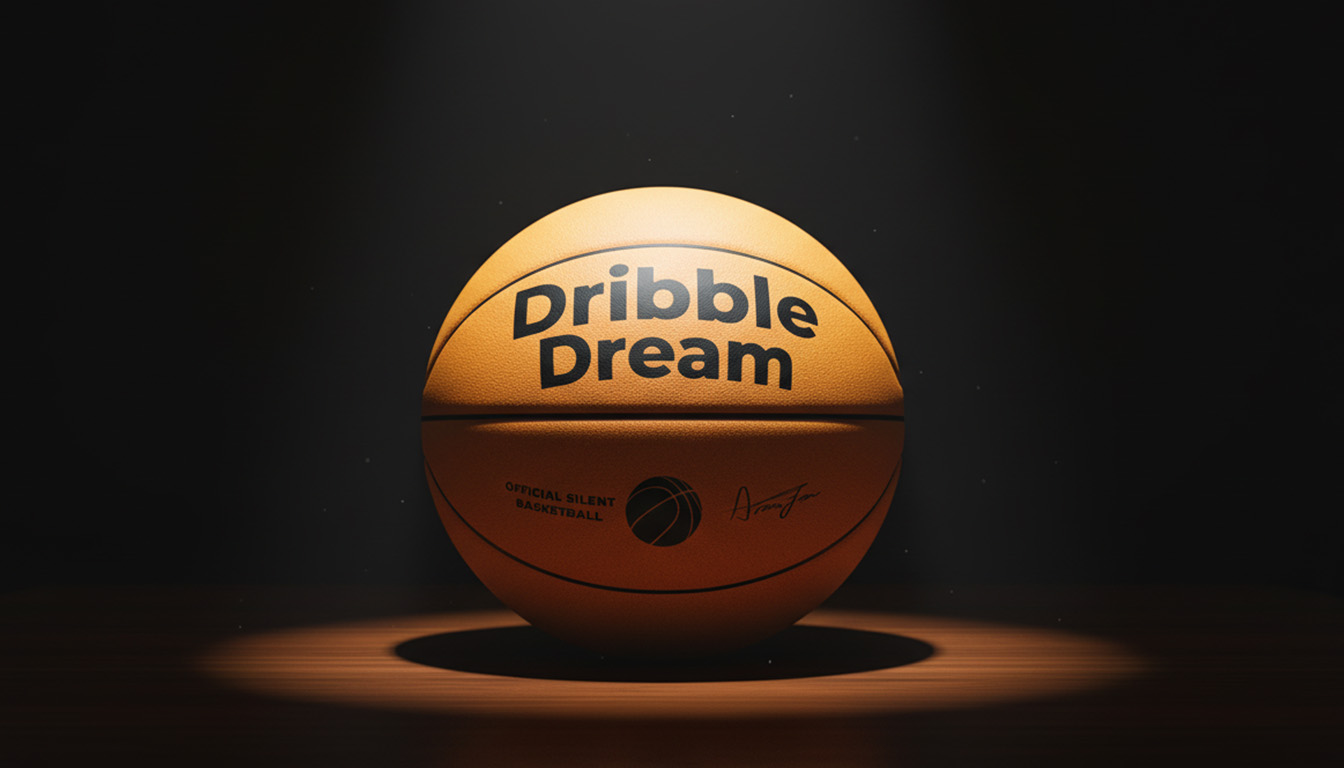
Why I'm sharing this
I'm not an influencer.
I'm sharing this because I know:
There are thousands of moms out there who feel exactly like I felt.
Desperate. Guilty. Helpless.
Watching their kids... disappear.
Into screens.
Into inactivity.
Into a version of themselves that's not them.
And nobody tells them:
"Hey, there's a simple solution."
So I'm telling you.
The Dribble Dream Silent Basketball currently costs $40.
That's less than Screen Time Limit Apps ($49).
Less than two Family Therapy sessions ($318).
I spent $706 on solutions that didn't work.
This ball for $40 did more than everything else combined.

Your last chance before stock runs out
The Dribble Dream Silent Basketball™ is currently available at 60% off.
And when you order multiple, they have an additional bulk discount.
But only while current stock lasts.
Once this batch sells out, you're looking at 8-12 weeks wait time at full price.
There's even a 100-day money-back guarantee.
But honestly?
Most people don't need it.
Of the 34 moms who bought the ball after my recommendation, not a single one was returned.


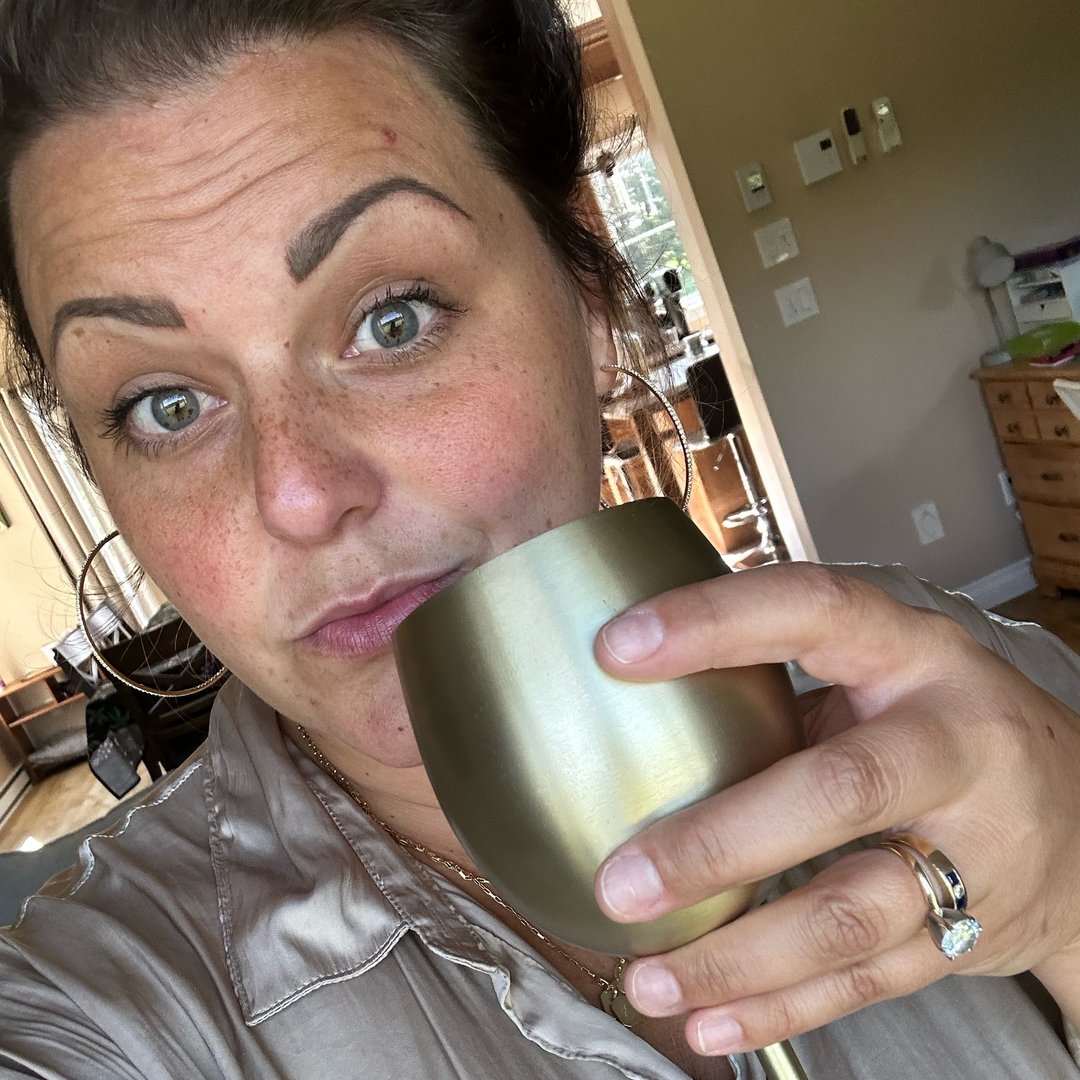



What I want to tell you as a mom
A few days ago, Ryan came into the living room.
Ball in hand.
"Mom, can you play with me?"
We played for 20 minutes.
Just him and me.
At the end, he grinned and said: "Can we do this more often?"
My son was back.
The decision that could save childhood
The question isn't whether this works the results speak for themselves.
The question is:
How much longer will you watch social media and apps steal your kid's childhood?
Don't let another day go by where your child spends too many hours on the tablet.
It's time to finally wake up.
And give your child a real alternative.
Your child deserves more than what apps and algorithms offer.
.png)
